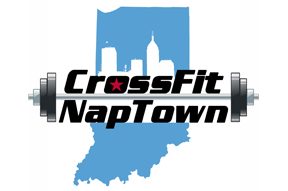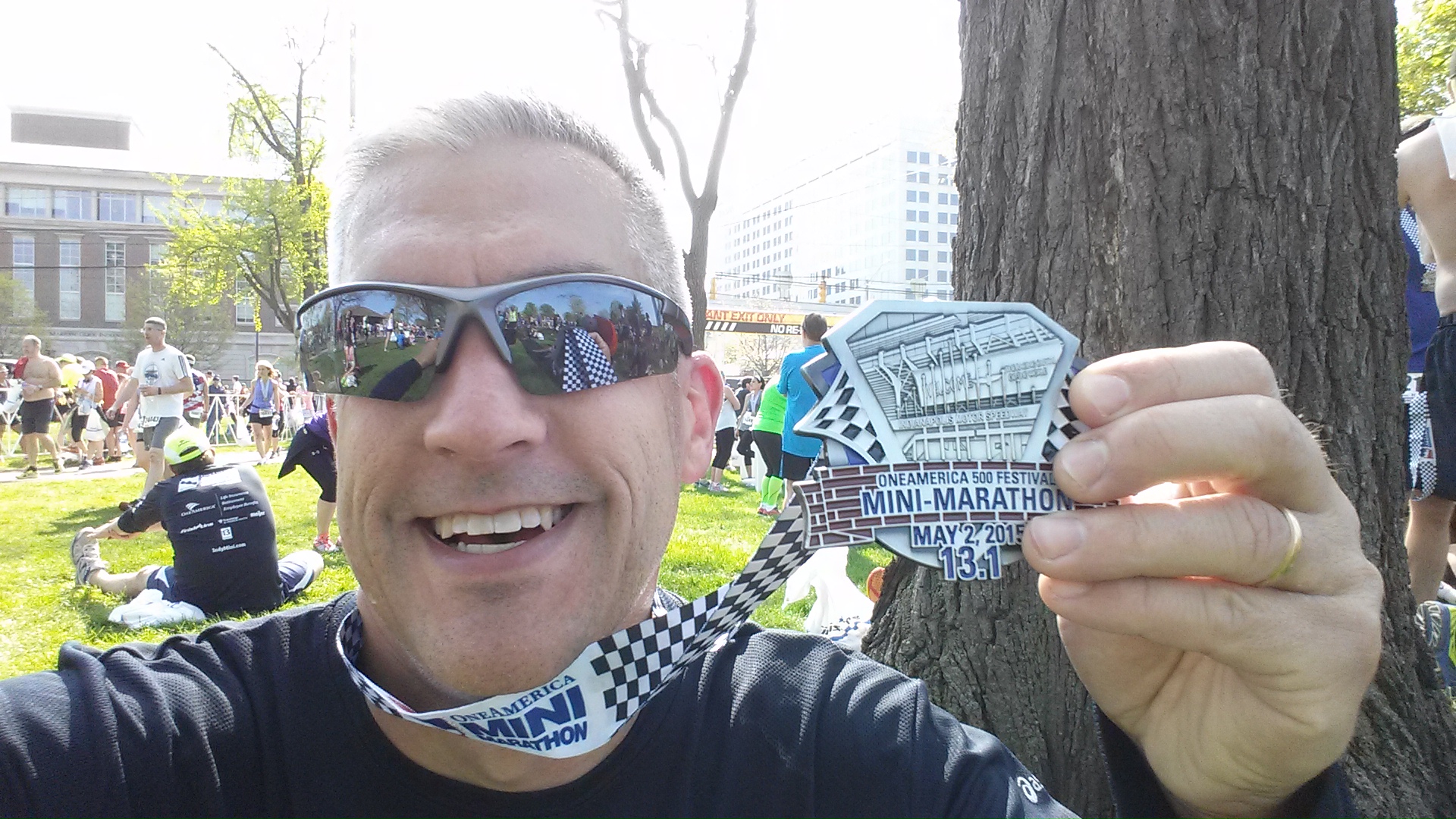When I (infrequently) post something here, it’s generally tech-related, and often specific to SQL Server. This one’s a little different. Throughout the last year and a half, I’ve improved my physical fitness dramatically, losing weight and exercising a lot. I get a lot of compliments (and they’re appreciated), but I also get asked frequently how I did it. This is my answer.
Before I get into the specifics, please keep in mind that everyone is different. We all have our motivations and fears, physical distinctions, our own histories. We are all at different stages of our lives. What works for one person is not a recipe for another. But, nonetheless, I’m sharing my own story here so that – if you’re wanting to head down the same path – you have one more perspective to consider.
It started around February of 2014, and in a very unassuming way. I was at work, attending a lunch meeting. Pizza was provided. Good pizza. And, for whatever reason, I just decided that day that I was going to skip it. This wasn’t the first time I’d turned away food in an attempt to improve my health. But it was the first in a pattern. Starting with lunch that day, I watched what I ate. I avoided foods with a lot of fat. I started counting calories. I ate smaller portions. I avoided soft drinks entirely.
There were a few effects from this. First, I was hungry all the time. Not starving, but always hungry, a mild yet unpleasant and ever-present kind of hungry. In the past, this is what would do me in. I would cave in and go back to old eating habits. But this time – again, I’m not sure why it stuck – I kept at it. I got used to being hungry. That sounds hard, and it was. And I’m not saying I was starving myself, not by a long shot. But I was always – ALWAYS – just a bit hungry. And yes, I said ‘was’ – more on that later. One thing that helped was actually counting calories. I would do the math each day, keeping a running tally. Being a competitive and numbers-based sort of person, keeping ‘score’ like this kept me focused.
Another effect is that my arthritis, which I’ve fought with since college, nearly disappeared. I eventually tied this as much to the soft drinks as the weight loss. Even now, if I have more than one a day, my arthritis tends to creep back in. It’s worth mentioning that I also take a couple of glucosamine/chondroitin pills each day. My experience with those has been that I need to stick with them. If I forget for a couple of days, then the arthritis creeps back. And ‘creeps’ is the right word, because it’s as if there is a build-up of of their effects in my body. Skip a day, and I’m not bad. Skip a few days, and the ‘reserve’ drops. Start taking them again and it takes a couple of days before I gain the benefits again. But even with the g/c pills, soft drinks have been the biggest factor. For what it’s worth, I can’t stand fake sugars, so I’ve never been into diet drinks. Caffeine was optional (though usually present), but it always had to be sugar or hfcs in my drinks. So, lots of Coke and Cherry Coke and Dr. Pepper, hfcs and all.
Anyway, this went on for about six months – simply changing my diet, day in and day out. And in that time, I dropped from about 195 to about 165. It was a steady drop, one that I could (and did) watch daily on the scale. I received a lot of compliments, both from people who saw me day-in and day-out at work and from people who saw me more infrequently. The latter were quite often very impressed. Again, I appreciated the compliments, and that certainly helped me stay on track.
In June of 2014, the Vice President in charge of our department at work (to whom I will forever be grateful), elected to sponsor a membership at a nearby Crossfit gym for anyone who wished to join. We already had the opportunity to get reimbursed for fitness classes (and still do), but this was a team-building attempt, a two-day-per-week membership that included a class at noon on Fridays for all those in our department who wanted to work out together.
 I was originally not going to go, but I had one or two coworkers talk me into it. I’m not one to make this claim lightly, but that day changed my life. I quickly learned a couple of things about Crossfit that suited me perfectly. For one, the workouts are always varied. Today’s workout involved a pull-up/ring combination, three distinct bar movements, and some jumprope. That is very important for someone like me, who has a lousy attention span and needs to be mentally stimulated. Even the plan for the workout – things like AMRAP, EMOM, etc (go ahead, Google them) – will force you to think differently about the exact same movement, depending on the requirements of the workout. This is one facet of Crossfit that has helped me immensely.
I was originally not going to go, but I had one or two coworkers talk me into it. I’m not one to make this claim lightly, but that day changed my life. I quickly learned a couple of things about Crossfit that suited me perfectly. For one, the workouts are always varied. Today’s workout involved a pull-up/ring combination, three distinct bar movements, and some jumprope. That is very important for someone like me, who has a lousy attention span and needs to be mentally stimulated. Even the plan for the workout – things like AMRAP, EMOM, etc (go ahead, Google them) – will force you to think differently about the exact same movement, depending on the requirements of the workout. This is one facet of Crossfit that has helped me immensely.
Another aspect to it is that movements often use your body weight as resistance, or use free weights. Aside from the rowers (or ergs or whatever the darn things are called), there are no machines. The effect is that you are conditioning your body, as a whole, all the time, not just working on this or that specific muscle group. After more than a year of Crossfit, my balance has improved. My overall fitness has improved. I really appreciate that.
A final thing about the benefit of Crossfit in particular did not occur to me until much later. It’s the community that has formed there. I’m a developer. Not only that, I’m a data-tier developer. It goes without saying that my social skills are not my greatest asset. But attending the same classes, week in and week out, for over a year, and I’m on a first-name basis with most of my classmates, as well as most of the instructors. I suppose that’s to be expected, but it’s just one part of the friendliness there. The instructors do their best to make it a welcoming environment. Crossfitters encourage each other. Yes, many of us are extremely competitive, but we’re competing against ourselves as much as anything. We love to see each other do one more rep, lift a little more weight, get that next PR. There’s an implicit understanding that we each have our limits and we’re there to push those limits, not hurt ourselves trying to beat the person next to us. It’s a great environment, and though I almost never see any of these people outside of class, I’m very comfortable around them in class.
Anyway, that started in June, with our group’s Friday noon class. I took advantage of the +1 and also attended the 5:45am class on Tuesdays, starting the very next week. Yes, 5:45am. I’ve always been a bit of a morning person, but this was a time that I knew I could do without interruption. After all, the only thing you ever miss at 5:45am is sleep. That first Tuesday was rough. I had an issue with low blood sugar and didn’t have the benefit of a bunch of co-workers sharing my class who were also as out of shape as me. But I went back that Friday, and the following Tuesday, and so on.
At some point, I added a third day to my program, attending the 5:45am class on Thursdays as well. There was probably at least a month between thinking about it and actually doing it, as I was still taking a couple of days to fully recover from each workout. And yes, that’s part of it. Even now, after more than a year of Crossfit, I’m often sore from Tuesday morning’s workout into Wednesday evening. Part of it is the intensity of the workout. Part is my age – I’m now 40, after all. And part of it is just the fact that I didn’t start getting into shape until last year.
That brings me to another point about this process. It’s been quite a learning experience for someone who has such as limited history of exercise. Other than a couple of seasons of little league baseball, I never played organized sports as a kid. I was never on a team in school. I played pick-up games of this and that, and played a fair amount of racquetball in college, but that’s it. When I walked in the door at Crossfit for the first time, I hadn’t touched a barbell since at least college, and hadn’t run a mile without stopping in probably the same time. So, yes, a lot of this journey has been dealing with soreness. But it’s also been about learning what my body is actually capable of. I’ve learned what body parts give out and when. I’ve learned about muscle fatigue and joint pain and oxygen issues. I feel that I now understand my own body a whole lot more than I did. I know when I can push myself, and when to back off.
Like I said, I hadn’t run a mile since college (at least). That changed sometime late last year, during a Crossfit workout. That struck me – how I was able to do something so simple for the first time in nearly two decades. So, later that week, I went on a run. I probably ran about two miles or so. Shortly after that, I extended it by half a mile. And then another half a mile. By the time winter had really set in, I was up around 8 or 9 miles, I think.
 Because I was fascinated by the process of improvement, and the “another half a mile” mentality, I decided I was going to try to run the 500 Festival Mini-Marathon in May. I went out on a snowy day to make sure I could at least hit the 5-mile mark. If I could pull that off, and then increase by half a mile each week, I would be able to go the distance in the Mini. I went the distance, and signed up for the Mini sometime in the next couple of days.
Because I was fascinated by the process of improvement, and the “another half a mile” mentality, I decided I was going to try to run the 500 Festival Mini-Marathon in May. I went out on a snowy day to make sure I could at least hit the 5-mile mark. If I could pull that off, and then increase by half a mile each week, I would be able to go the distance in the Mini. I went the distance, and signed up for the Mini sometime in the next couple of days.
Training for the Mini was another adventure in learning what my body could and could not do. I quickly learned that each additional half-mile was always the hard part. If I went 8 miles one week, then 7.5-8.0 was twice as hard as 7.0-7.5. Then, the following week, 7.5-8.0 was relatively easy and it was 8.0-8.5 that was difficult. However far I ran, that last half-mile was always the killer. But I kept with it. Runkeeper, the app I use on my phone, helped. Being able to run out in the country, farther and farther from my neighborhood, also helped.
 I think my time in the Mini was about 2:07. Respectable, as I’ve been told, especially for a 40yo first-timer. I don’t have any intentions of running any more races (though the occasional quirky 5k does appeal to me), but I will likely go back for the Mini next year. The race is quite an event – people lining the streets, massive attendance, bands playing along nearly every block, taking a lap around IMS. So I’ll likely do it again because I enjoyed the event.
I think my time in the Mini was about 2:07. Respectable, as I’ve been told, especially for a 40yo first-timer. I don’t have any intentions of running any more races (though the occasional quirky 5k does appeal to me), but I will likely go back for the Mini next year. The race is quite an event – people lining the streets, massive attendance, bands playing along nearly every block, taking a lap around IMS. So I’ll likely do it again because I enjoyed the event.
Anyway, as I’ve been working out and running, a curious thing happened. For the longest time, I was still getting compliments about my weight loss. Only I wasn’t losing any more weight. I’m pretty steady in the 160-165 range now, and have been there since last June. But what I’ve found is that I’m redistributing my weight. I’m getting more muscle mass. So it looks like I’m losing weight. I have to say that’s more rewarding than when I was actually losing weight.
Remember when I said I *was* hungry. Well, as my fitness improved, my metabolism went up. Anyone with a basic understanding of human health and biology would recognize that, but to actually live it is different. Granted, I haven’t completely returned to my old diet, but I’m a lot more relaxed about it than I used to be. And I can get away with that. My portions are down, I try to balance the bad with the good, and I still avoid soft drinks as much as possible, but it’s not like it was during that initial time.
What all this means to me, day to day, is that I get a lot more out of life. I play soccer with my kids (and run a club at their school). I get involved in active stuff without worrying how bad I’m going to feel the next day. I’m not nearly as limited by arthritis as I used to be. When I go for a check-up, I get “Well, I hate to break it to you, but you’re perfectly healthy!” And, frankly, when I look in the mirror, I see improvement – more muscles, not a steadily-growing belly.
The scary part is that I’m now a prisoner to my own success. Like I said, I started late in life. I’m not getting any younger. When I miss a couple of Crossfit classes, or can’t go for a run for a while, I can feel it. So, I’m mentally conditioning myself to the fact that I’m going to be doing this the rest of my life. That’s a hard pill to swallow. But the alternative – the poor health, lethargy, etc – that was its own prison. It’s just a matter of accepting that I’ve got the 5am alarm set a couple of days a week for the rest of my life.
Anyway, that’s my story. I hope it helps someone. Godspeed!